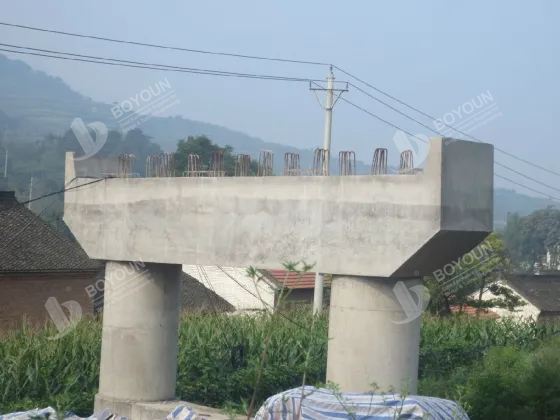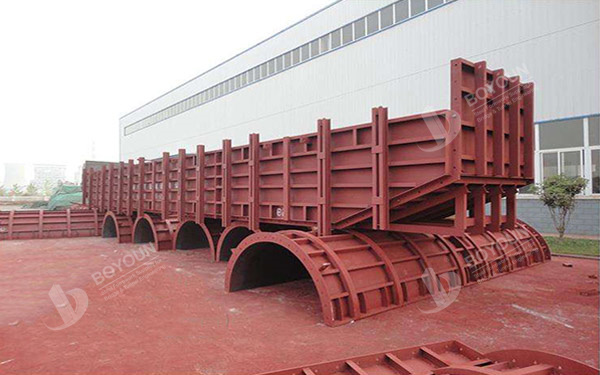In recent years, with the increasing emergence of wide bridges and the trend towards lightweight lower structures, as well as the increasing emphasis on durability during bridge usage, pre-stressed pile caps have become more widely used. Pre-stressed pile caps can withstand large cantilevers and spans while effectively preventing cracks, making their design and calculation particularly important.

The bending resistance design of pre-stressed pile caps is the most critical aspect, where the pre-stressed tendons play a crucial role. Like regular reinforced concrete pile caps, there is a reasonable ratio between column spacing and cantilever length for pre-stressed concrete pile caps. However, due to the frequent pursuit of large cantilevers or spans in pre-stressed pile caps, this ratio is often not the controlling factor. Key design considerations include:
1. It 's crucial to monitor stress at each stage of construction, including the service phase. Accurate and comprehensive segmentation of construction stages is crucial as certain stages, such as applying pre-stress, removing scaffolding, and placing beams, are critical to design control and cannot be overlooked .
2. Adjustment of Pre-stressed Tendon Placement, Quantity, and Tensioning Sequence: Repeated adjustments are necessary to ensure that the stresses at all construction and service stages meet the code requirements. Identifying the optimal tendon layout can maximize pre-stress efficiency. Effective design minimizes waste and simplifies tendon arrangements, ensuring uniformity and ease of construction. This requires highly skilled and responsible designers .
3. Selection of Pre-stressed Tendon Type: Larger tonnage steel strands should be preferred to avoid excessive pre-stressed ducts, which weaken the concrete section and complicate construction .
4. Tensioning Strategy: Tendons should be tensioned in batches (typically two batches) to balance construction convenience and operational requirements. Excessive tensioning cycles can complicate construction, while insufficient cycles may not meet both construction and operational demands.
5. Construction Sequence Optimization: Proper division and adjustment of the construction sequence can effectively utilize formwork and save time.

For supported beam bridges with pre-stressed pile caps, shear calculations are rarely performed for several reasons.
(1)The vertical component of the bent pre-stressed tendon resists shear force.
(2)The axial force generated by the pre-stressed tendon partially counteracts the main tensile stress, providing shear resistance.
(3)The larger cross-section of pre-stressed concrete pile caps, higher concrete grade, and reasonable arrangement of stirrups significantly enhance shear resistance .
The design of ordinary reinforcement in pre-stressed concrete pile caps must be carefully considered. Ordinary reinforcement acts like tendons' "muscles," essential for normal operation when pre-stress alone is insufficient. Key considerations include:
(1)Longitudinal Reinforcement: Place longitudinal reinforcement (tensile reinforcement) in the tension zone to improve control of tensile stress during construction and reduce the consumption of pre-stressed tendons. The reinforcement should be Grade II steel with a diameter no less than φ16; φ20 or thicker is preferable. Reinforcement should be evenly distributed with a spacing no greater than 15 cm .
(2)Stirrups: Stirrups play a significant role in torsional and shear resistance. Stirrup spacing should not be too large; typically, 10-15 cm is appropriate. For cantilever sections where the height gradually decreases, the stirrup spacing should be increased appropriately. Stirrups can use Grade I steel with a diameter no less than φ12; some designs now use Grade II steel as stirrups.

International Department: Room 2211-2212, Tower C of Wanda Plaza, Tongzhou District, Beijing 101118, China.
+86-13021287080
info@boyoun.cn